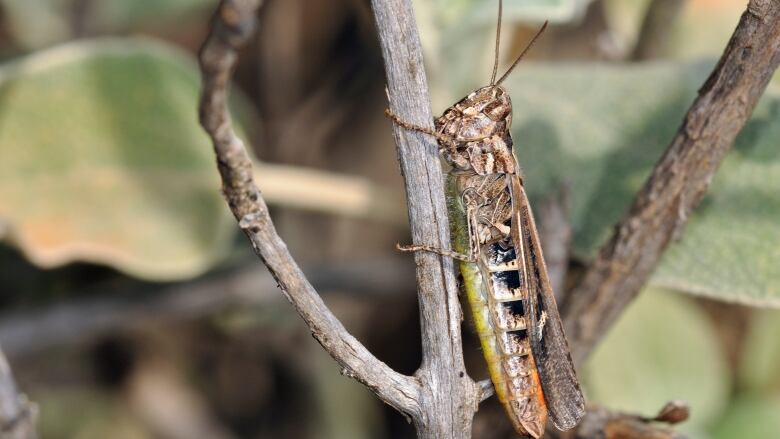Jiminy Cricket! Grasshopper population on the rise in Manitoba
Manitoba home to 85 different species of grasshopper, entomologist says

Grasshoppers are springing up en masse this summer due to a series ofyears of dry weather, according to a Manitoba Agriculture entomologist.
For the last two years the provincial grasshopper population has been on the rise, John Gavloski told CBC.
"They seem to respond to the environment quite well," Gavolski said. "This is our third very dry year in a row and that's been building the populations up."
But, he adds, not all of the 'hoppers are pests with the potential to harm garden and field crops and ruin yields. Of the 85 grasshopper species found in Manitoba, only four are considered pests, he said.
"Those four species can build their levels up very high when they get the right conditions and they will also feed on many of our garden and field crops."
The more common pest grasshopper species in Manitoba has white stripes that start behind their eyes down to back of their wings. Another has a black mask behind the eye, and another has black dots on its wings, Gavloski said.
When their levels are high, they can have a "significant" impact on Manitoba's agriculture yields, he said. The province is working to letproducers know there may be issues.
"Grasshoppers continue to be of concern in some areas," Manitoba Agriculture's latest crop pest update states.
The province has been tracking and forecasting grasshopper populations in some form or another since the early 1930s, after the dry and dusty late 1920s, Gavloski said.
Counts are conductedin August when most of the insects are in their adult stage, according to the province.













_(720p).jpg)


 OFFICIAL HD MUSIC VIDEO.jpg)
.jpg)



























































































